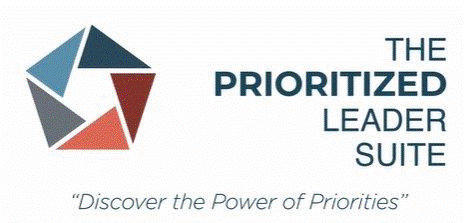86% of business leaders agree that success hinges on their rising leaders

Those are startling statistics above from a recent poll by Deloitte. According to further research from Deloitte, organizations report that 80% of their respondents rate leadership as a high priority, yet only 41% believe their organizations are ready to meet their leadership requirements.
There's more from a recent Gallup study:
What % of US employees agree that leadership communicates effectively?
13% -- Does this equal a Trust Deficit?
The Challenge Defined
Today, business leaders continue to face significant challenges finding clarity, direction, and balance amid the COVID pandemic and its related economic impact. And, managing remote teams during times of uncertainty can be extremely difficult and stressful, especially when team communication, performance, and productivity is more crucial than ever. But, without advanced and innovative tools, training and guidance, leaders will lose the ability to build strong organizations unless they can creatively lead cohesive, high-functioning teams. There are tools; however, that can enhance the strengths and skills of leaders and their teams.
Considerations for Today's Leaders and Tomorrow's
We can assess personality, skills and competencies, EQ (emotional intelligence), and more, but there are critical blind spots within companies. In the current crisis, the most significant blind spot is the misalignment of priorities. There is a lack of focus on what's most important -- the company's health, productivity, and profitability. And this limits an organization's potential, or in the worst case, leads to catastrophic consequences like a mass exodus of workers from their employers.
For example, studies show millennials are motivated by causes and are purpose-driven. Unlike previous generations, they will not tolerate the hypocrisy of businesses that talk about purpose, values, and vision – yet are all about the bottom line. They will work for organizations that practice what they preach, or they will walk! And they are.
What's missing that is causing this leadership crisis? There is no framework, no developmental path, no consistency, or structure. High levels of influence endure only with the successful (and consistent) reflection and recalibration of one's priorities. Through a framework of 5 critical areas, reprioritization allows companies to recalibrate, repurpose, and thrive even during these uncertain times. This continual realignment allows the best leaders to keep the most important at the forefront, cutting through the constant barrage of tasks, activities, interruptions, and urgent requests.
Profits over Purpose?
Purpose-driven leaders have a larger vision than themselves -- yet have the unique ability to be both humble and direct. They both encourage and empower those around them while speaking the truth and confronting reality as they see it. They face the brutal facts of today and still bring inspiration, energy, collaboration and focus to those around them. Leaders and their teams can be trained to focus on their priorities in the proper order.
The Prioritized Leader suite helps leaders identify their current priorities, obtain guidance on correctly ordering those priorities, and spread the impact throughout the organization. It's about recalibrating priorities and growing each area to see greater levels of health, productivity, and profitability.
The Five Priorities of Leadership
What are these Five Priorities for organizational success, and is there an optimal order?
According to Brandon Schaefer, creator of The Prioritized Leader training program, there is an optimal order. Initially inspired by the book "Freakonomics" and the book's assertion that the world is way more complex than just dollars and cents, Brandon asked the question: "What are the essential priorities for business?" The answer:
- Purpose: It's about knowing and living the "why" of your organization, being able to articulate a clear and compelling future. The currency is vision and values.
- People: The level of health and productivity we have with our colleagues and connections. The currency is encouragement and accountability.
- Pace: Discerning how fast (or slow) the organization needs to move to sustain long-term success, capitalize on opportunities, and preserve capital. The currency is time and energy.
- Perception: Choosing a growth mindset, staying open to creative solutions and new ideas. The currency is insight and innovation.
- Profit: The effective management, investment, and release of an organization's resources. The currency is dollars and cents.
The success of any organization rises and falls on its leadership. We all know too well:
"As the leaders go, so goes the company."
Therefore, it is mission-critical that individuals and teams do all they can to maximize strengths, build up weaknesses, and identify blind spots. Only when leaders invest in the right priorities can true potential be reached while keeping those priorities in the correct order.

